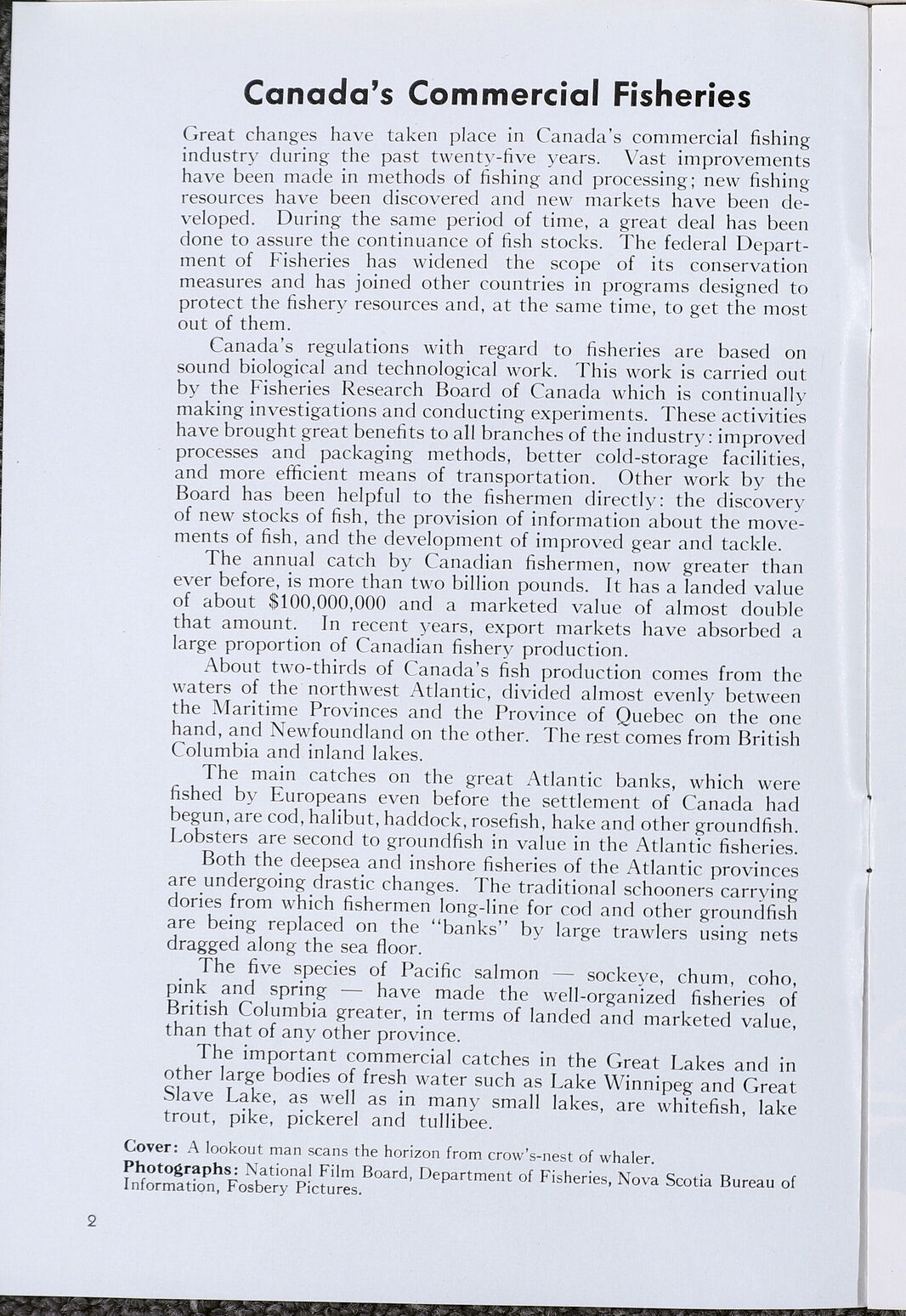
Full resolution (JPEG) - On this page / på denna sida - Canada’s Commercial Fisheries

<< prev. page << föreg. sida << >> nästa sida >> next page >>
Below is the raw OCR text
from the above scanned image.
Do you see an error? Proofread the page now!
Här nedan syns maskintolkade texten från faksimilbilden ovan.
Ser du något fel? Korrekturläs sidan nu!
This page has never been proofread. / Denna sida har aldrig korrekturlästs.
Canada’s Commercial Fisheries
Great changes have taken place in Canada’s commercial fishing
industry during the past twenty-five years. Vast improvements
have been made in methods of fishing and processing; new fishing
resources have been discovered and new markets have been de-
veloped. During the same period of time, a great deal has been |
done to assure the continuance of fish stocks. The federal Depart- |
ment of Fisheries has widened the scope of its conservation
measures and has joined other countries in programs designed to
protect the fishery resources and, at the same time, to get the most
out of them. |
Canada’s regulations with regard to fisheries are based on |
sound biological and technological work. This work is carried out
by the Fisheries Research Board of Canada which is continually
making investigations and conducting experiments. These activities
have brought great benefits to all branches of the industry: improved
processes and packaging methods, better cold-storage facilities,
and more efficient means of transportation. Other work by the
Board has been helpful to the fishermen directly: the discovery
of new stocks of fish, the provision of information about the move-
ments of fish, and the development of improved gear and tackle.
The annual catch by Canadian fishermen, now greater than
ever before, is more than two billion pounds. It has a landed value
of about $100,000,000 and a marketed value of almost double
that amount. In recent years, export markets have absorbed a
large proportion of Canadian fishery production.
About two-thirds of Canada’s fish production comes from the
waters of the northwest Atlantic, divided almost evenly between
the Maritime Provinces and the Province of Quebec on the one
hand, and Newfoundland on the other. The rest comes from British
Columbia and inland lakes.
The main catches on the great Atlantic banks, which were
fished by Europeans even before the settlement of Canada had
begun, are cod, halibut, haddock, rosefish, hake and other groundfish.
Lobsters are second to groundfish in value in the Atlantic fisheries.
Both the deepsea and inshore fisheries of the Atlantic provinces +
are undergoing drastic changes. The traditional schooners carrying
dories from which fishermen long-line for cod and other groundfish
are being replaced on the ‘“‘banks’’ by large trawlers using nets
dragged along the sea floor.
The five species of Pacific salmon — sockeye, chum, coho,
pink and spring — have made the well-organized fisheries of
British Columbia greater, in terms of landed and marketed value,
than that of any other province.
The important commercial catches in the Great Lakes and in
other large bodies of fresh water such as Lake Winnipeg and Great
Slave Lake, as well as in many small lakes, are whitefish, lake
trout, pike, pickerel and tullibee.
Cover: A lookout man scans the horizon from crow’s-nest of whaler.
Photographs: National Film Board, Department of Fisheries, Nova Scotia Bureau of
Information, Fosbery Pictures.
<< prev. page << föreg. sida << >> nästa sida >> next page >>